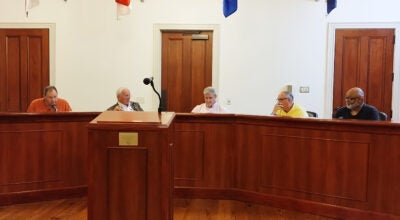Stimulus update: Local impact a year later
Published 10:04 pm Friday, March 26, 2010
President Barack Obama signed his $787-billion economic stimulus package into law just over one year ago hoping to speed the country back to financial recovery.
Marengo County officials are still waiting on how their community factors into that equation.
Termed the American Recovery and Reinvestment Act of 2009, the controversial bill met with much opposition by Republican politicians, and was meant to turn a near-broken down economy around and put unemployed Americans back to work.
Those who resisted the pricey plan wondered if the investment of tax dollars would ever accomplish what lofty goals the bill set out to meet.
As for the bill’s direct impact on Marengo County, County Commissioner Ken Tucker hasn’t seen much of one.
“Stimulus? What stimulus,” pondered Tucker, who also serves as dean of the business college at the University of West Alabama. “The reality is that not much has filtered down to the county and city levels. Some has, but not as much as we’d like to create jobs, bolster existing expenses or pursue economic activities.”
Some of those activities include road projects like resurfacing some county roads and adding lanes to nearby highways.
Linden mayor Mitzi Gates said adding lanes to Highway 43 from Thomasville to Tuscaloosa is a worthy project that would only benefit the county’s economy as well as all of Alabama’s.
“That is the kind of stimulus project that could have created jobs and promised a sustainable economic impact,” Gates said.
Demopolis mayor Mike Grayson said the stimulus dollars have yet to leave any kind of major impression on his community. He said the school system was granted some temporary relief, but not much else.
“Our overall economy is slow, but we are, for the most part, hanging on and doing okay,” Grayson said. “Other than the loss of Bruno’s and the pending loss of New Era Caps, we are still here.”
The New Era closing signifies the county’s biggest economic setback, Tucker said. He feels Marengo County has faired well otherwise, especially when compared to some other areas that have taken bigger hits.
“[The county] is better off than most surrounding counties and others in the Black Belt,” he said. “The unfortunate closing of New Era will have a significantly negative impact. That’s huge. But the county has positioned itself better than other counties.”
Tucker cited cities within the county running their governmental units effectively as a reason Marengo County pushes on. He’s pleased to see the response to the New Era closing of working with the state to focus on helping displaced workers find new job opportunities by enhancing their skills through training sessions thanks to a detail in the negotiated severance package.
The deal guarantees each worker will have up to $1,000 to use towards extending his or her education or taking job-training courses.
Tucker does acknowledge the stimulus legislation’s positive effect on the nationwide weatherization program for low-income households as well as educational systems.
“The stimulus has helped the state reduce the impact of proration and reduce various deficits,” he said.
In Linden, Gates sees several potential advantages for independent business owners.
From my perspective, the most beneficial economic stimulus that the City of Linden and its individual merchants can hope for is the economic stimulus of Linden citizens using their buying power in Linden,” she said. “I think most residents of any town don’t realize the absolute vital importance of their spending money in the town where they live.”
Gates wants to stress that members of her community must financially support the merchants in town where they live.
“I’m an eternal optimist, so I find it difficult to paint a picture of financial gloom and doom when the fact is that Linden has been very blessed in spite of the fact that we’ve lost industry and jobs,” she said. “The reality is that Linden and most small municipalities have been slower to feel the negative economic impact of the national economic crisis than metropolitan areas.”





